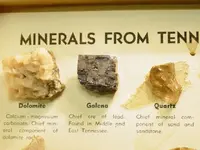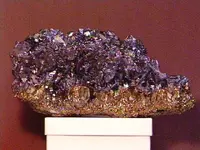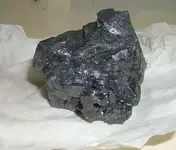Well, I never claimed to be a Geologist but, I certainly have dug my share of native rocks. And to me, It looks like you have a wonderful Galena/Pyrite specimen.~Cubic crystals~ Galena usually develops "cubic crystals" and often forms "Twins.." "Steps" are another common feature on broken crystal faces. Although I have NEVER found a specimen like this It sure looks like Galena. These Mineral's played Havoc on our fore-fathers who had to survive Gold hunting etc... I don't think Platinum is Indigenous to Cali.... .Awesome
-----------------------------------------------------------------------------------------------------
Platinum
Native platinum is an exotic mineral specimen and an expensive metal. Unfortunately, well formed crystals of platinum are very rare and the common habit of platinum is nuggets and grains. Pure platinum is unknown of in nature as it usually is alloyed with other metals such as iron, copper, gold, nickel, iridium, palladium, rhodium, ruthenium and osmium. The presence of these other metals tends to lower the density of platinum from a pure metal specific gravity of 21.5 to as low as 14 and very rarely any higher than 19 in natural specimens. Few of these rarer metals form significant deposits on their own and thus platinum becomes the primary ore of many of these metals. The presence of iron can lead to a slight magnetism in platinum nuggets and is a common enough property to be considered diagnostic.
The element platinum is extremely scarce in most crustal rocks, barely seen as even a trace element in chemical analysis of these rocks. However platinum seems to be much more concentrated in the mantle and can be enriched through magmatic segregation. Platinum's origin in the crust is from ultra-mafic igneous rocks and therefore platinum is associated with minerals common to these rocks such as chromite and olivine. Platinum's most common source however is from placer deposits.
Over the ages, the platinum became weathered out of the igneous rocks and were tumbled down streams and rivers where the extremely heavy grains and nuggets of platinum collect behind rocks and bends in the rivers and streams. These deposits, called placers,(Places itself?) that form behind the rocks and bends are enriched in heavy grains as lighter material is carried further down stream. The heaviest grains are the nuggets of gold, platinum and/or other heavy minerals.
The metal platinum is a valuable metal that is gaining in importance. It is typically more expensive by weight than gold, mostly a product of its scarcity. Platinum is very non-reactive and for this reason it is used in chemical reactions as a catalyst. Metallic platinum can facilitate many chemical reactions without becoming altered in the process. It is also used in many anti-pollution devices, most notable is the catalytic converter, and has been given the nick name the "Environmental Metal". Native platinum is the primary ore of platinum, but deposits containing the rare platinum arsenide, sperrylite of the Pyrite Group, have made a huge contribution to the world's limited supply.
PHYSICAL CHARACTERISTICS:
•Color is a white-gray to silver-gray, usually lighter than the platinum color of pure processed platinum.
•Luster is metallic.
•Transparency is opaque.
•Crystal System: Isometric; 4/m bar 3 2/m
•Crystal Habits include nuggets, grains or flakes, rarely showing cubic forms.
•Cleavage is absent.
•Fracture is jagged.
•Hardness is 4 - 4.5
•Specific Gravity is 14 - 19+, pure platinum is 21.5 (extremely heavy even for metallic minerals).
•Streak is steel-gray.
•Other Characteristics: Does not tarnish, is sometimes weakly magnetic and is ductile, malleable and sectile, meaning it can be pounded into other shapes, stretched into a wire and cut into slices.
•Associated Minerals include chromite, olivine, enstatite, pyroxene, magnetite and occasionally gold.
•Notable Occurrences includes Transvaal, South Africa; Ural Mountains, Russia; Columbia and Alaska, USA.
•Best Field Indicators are color, density, weak magnetism, hardness, associations and ductility.
Amethyst Galleries
sells natural mineral specimens, including precious metals and gemstones. For Fine Jewelry, please visit our affiliates.
--------------------------------------------------------------------------------

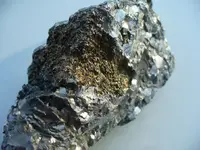
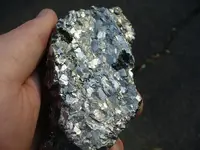
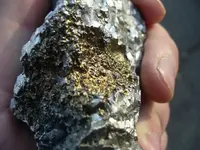
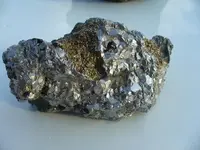
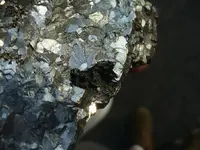
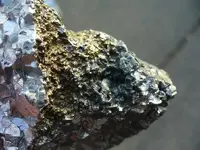




 how can i get it tested to see what it is?
how can i get it tested to see what it is?